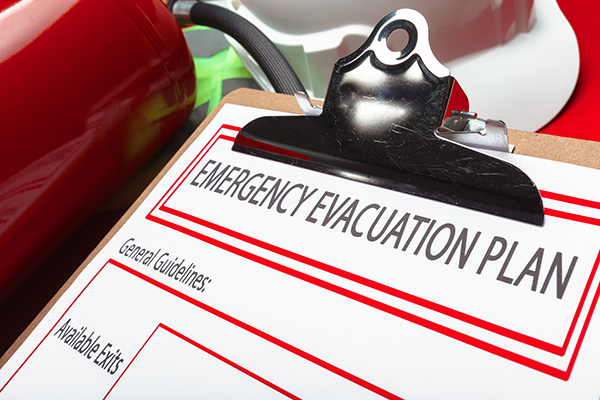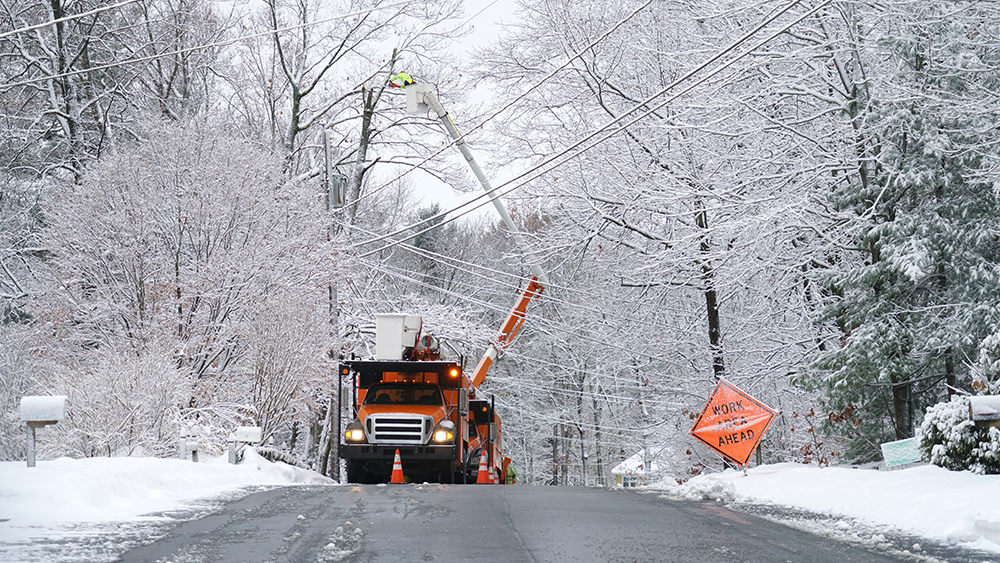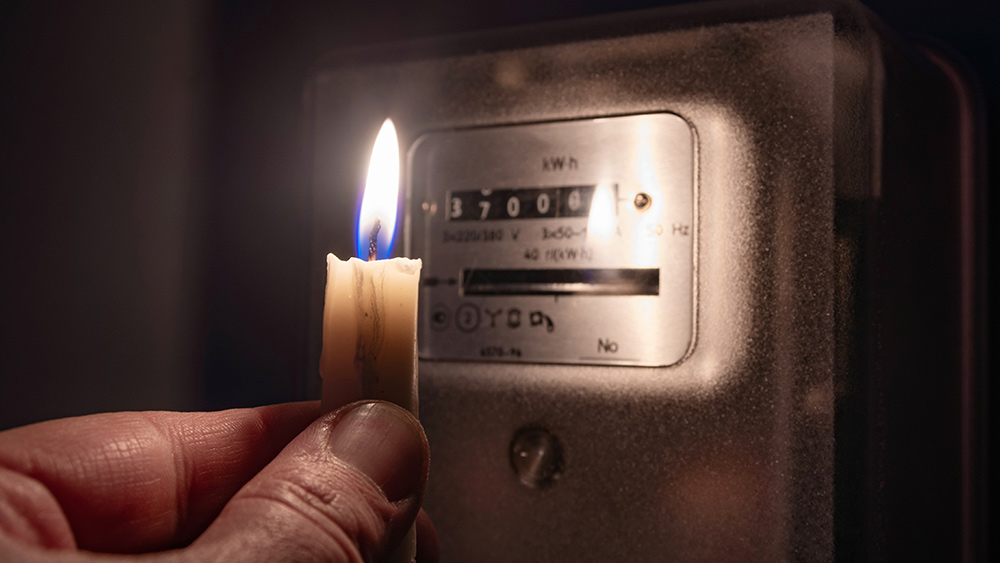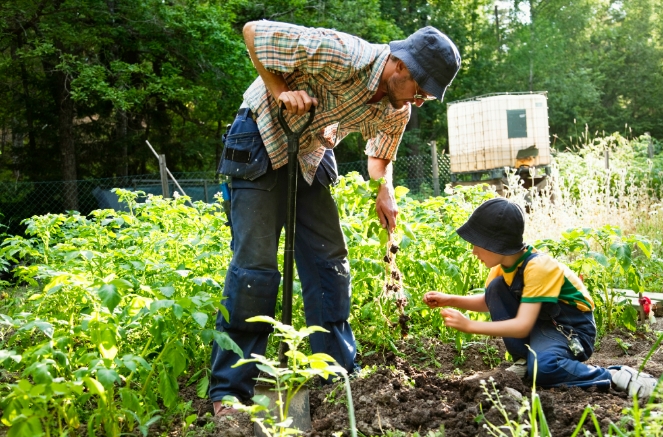SURVIVAL GUIDE: Preparing for an emergency family evacuation
02/23/2023 / By Olivia Cook

Learning how to plan and properly evacuate from your home and town or city is a critical step not only for preppers, but for everyone. A written action plan should be able to prepare your household for potentially having to evacuate in the future.
Here are 11 things to do as you prepare for an emergency family evacuation.
List your priorities
When drawing out the plan, you should have your highest priorities at the top of the list: humans come first, animals second, belongings we need third, and your list can go on.
Identify hazards
Identify the kinds of disasters that could happen in your area and find out how to get ready for them. Understand how your community shares important information and updates, whether through radio, TV, social media, sirens or alert text messages. If you’re not in a zone where evacuation is required, make a plan to stay at home if it’s safe during the emergency.
Hold a family meeting
Create a plan with your family for evacuating and getting to safety. Come up with a family communication plan for your family. Also, make an evacuation plan for your pets, ensuring they have a collar with updated contact details, and consider getting them micro-chipped to increase the likelihood of reuniting if they get lost during the evacuation. Every member of the household must understand their role and stay updated on any changes to the plan.
Create an emergency communication plan
Gather and note down the contact details of family and friends, including those who live out of town, as well as school and workplace contacts. Create wallet-sized copies of emergency contact information for each household member to carry, and also display a copy in a central spot at home.
Ensure everyone stores at least one emergency contact under “In Case of Emergency” (ICE) on their mobile phones or devices. Make a group list of all the mobile devices of people you need to communicate with in emergencies.
Choose and agree on familiar places both within and outside your neighborhood where you and your family can go for safety or to reunite. If you have pets or service animals, consider animal-friendly locations. Hold regular household meetings to go over and practice your communication plan.
Create a home escape plan
Create a floor plan of your home (or building if you’re in a condominium or apartment). Mark all doors and windows, and include escape ladders or fire escapes for multi-story buildings. Plan two ways to exit each room. Ensure that doors and windows leading outside open easily, and keep all escape routes free of obstructions. Establish a meeting spot outside your home at a safe distance.
Conduct home escape drills twice a year, both during the day and at night, involving everyone in your household. Practice using different exit routes. Teach younger children how to escape on their own if needed. Before leaving your home, turn off water and utilities, including the main circuit breaker. Drain water pipes, add anti-freeze to drain traps and plug drains.
Secure your home by closing and locking all doors and windows before evacuating. Inform family members or close friends about your evacuation plans. Be prepared for potential challenges upon your return, as your home might have been ransacked or damaged during your absence.
Pick a destination
Choose family or friends with whom you can stay safely and comfortably during emergencies, and make sure they agree to host you along with your pets. Stay informed by checking official announcements from authorities to identify shelters in various areas, and be aware of the procedures and important details.
Consider evacuating to these identified shelters only if it’s not possible to stay at home or with family and friends. Prioritize seeking shelter based on your specific circumstances and the guidance provided by authorities.
Plan your transportation route
Don’t solely rely on a global positioning system (GPS) or anything dependent on the power grid. Invest in compasses and different types of maps and learn how to read and use them effectively.
Ensure you have essential maps, including a national road atlas for cross-country travel, a state atlas with country and city maps, a local topographic map for course-plotting and resource identification, and city street and state highway maps, especially if you’ll be passing through those areas during evacuation.
If you only have a limited number of maps, opt for laminated or waterproof ones for durability, even though you won’t be able to write on them directly. Stay updated on announcements from local authorities for the most recent information regarding access to major public routes, and plan your navigation accordingly.
Plan for transportation
If you own a vehicle, always strive to maintain a full tank of gas. Make sure your vehicle is consistently in bug-out-ready condition by keeping up with maintenance and regular inspections whenever you might need to leave quickly. Explore investing in additional equipment such as car top carriers (roof racks), bike carriers, crossbars, and utility trailers for your vehicle. (Related: 5 essentials for your bug-out vehicle.)
Be aware of available resources for evacuating without a vehicle, such as government assistance, Community Emergency Response Teams (CERTs), or citizens’ corps if they exist in your neighborhood. Additionally, be prepared to walk in worst-case scenarios. Consider the potential distance you might need to cover on foot, especially when carrying a bug-out bag (BOB), and plan accordingly. (Related: Bug out basics: How far can you walk while carrying a bug out bag (BOB)?)
Assess your belongings
Prepare essential items that must be easily accessible, including go bags or backpacks for each household member and pets, labeled survival bags containing necessities like water, food, bedding, tents, and survival tools, as well as medical emergency kits and important documents. Consider creating modular bug-out bags for added convenience.
Segregate and secure irreplaceable items, especially those with high commercial or barter value. Each family member should create a list of personal items they want to bring, including gadgets, devices, and comfort items like books or toys.
Recognize that you can’t bring your entire home with you, so prioritize items based on the specific event you’re preparing for. Review each other’s lists and establish priorities accordingly. Keep enough cash on hand to cover at least a week’s expenses in case banks and ATMs become inaccessible during emergencies.
Review and test your emergency evacuation and escape plan
Regularly assess the efficiency and effectiveness of your communication group. Conduct surprise drills by asking members to return home unexpectedly on a school or workday and monitoring their response time in various scenarios, such as low traffic, rush hour, or crowded streets during holidays.
If there’s someone responsible for fetching and securing pets or service animals, have them conduct test runs to evaluate how well they can manage the animals. Keep in mind that animals, like their human counterparts, can be affected by added stress.
Convene another family meeting to debrief on what works and what doesn’t in your emergency communication and response plan. Discuss suggestions for potential “what if” scenarios and reach a consensus on the necessary actions to take. Regularly refining and adapting your plan based on these evaluations is key to maintaining preparedness.
Learn to be flexible with your emergency evacuation planning
Maintain backup plans since it’s impossible to predict events with 100 percent accuracy, and there’s no foolproof strategy for every possible scenario. Be flexible and ready to adapt as needed. Keep in mind that altering plans may require adjusting your budget to prioritize essential needs and assigning new tasks to those involved in your survival efforts.
Surviving both short-term and long-term disasters depends on a combination of factors. Preparation involves gathering resources, knowledge is essential in knowing how to use these resources effectively, maintaining a positive attitude is crucial, heightened awareness enhances your response, and your motivation to survive ties it all together. The synergy of these elements plays a key role in navigating and overcoming challenging situations.
The list is not exhaustive, so treat it as a “living document” and encourage your family members to keep updating it as necessary.
Check out the Health Ranger Store for items you and your family may need in emergency situations. Visit Preparedness.news for more stories like this.
Watch the following video on preparing an emergency evacuation escape plan.
This video is from the Survival 101 channel at Brighteon.com.
More related stories:
Making your escape: 5 factors to consider when developing an emergency bug-out plan.
5 reasons why motorcycles are the best bug out vehicles.
Bug out survival planning: Transportation ideas during a financial crisis.
Sources include:
Submit a correction >>
Tagged Under:
bug out, chaos, Collapse, disaster, Emergency plan, escape plan, evacuation plan, family evacuation, family prepping, homesteading, how-to, off grid, panic, preparedness, prepper, prepping, SHTF, survival, survival plan, tips
This article may contain statements that reflect the opinion of the author
RECENT NEWS & ARTICLES
COPYRIGHT © 2017 OFFGRID NEWS





















